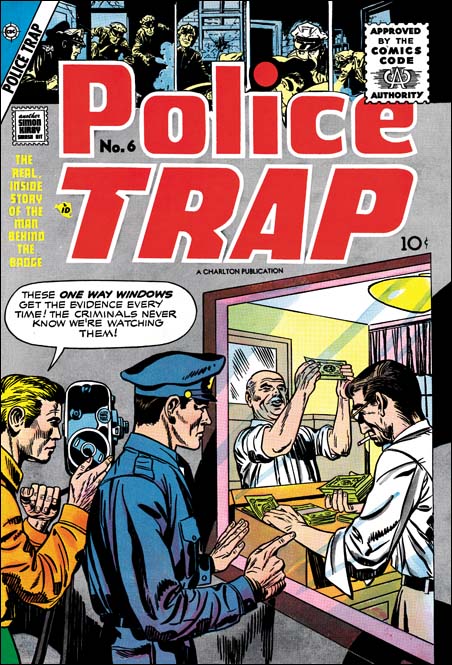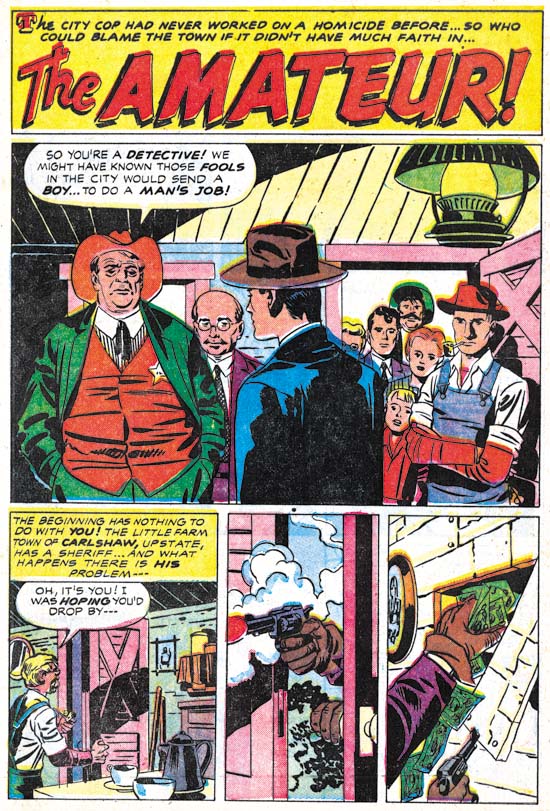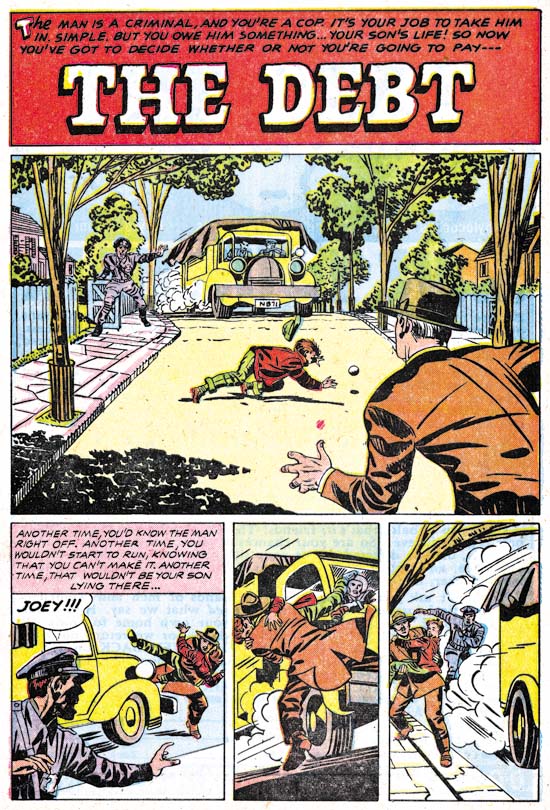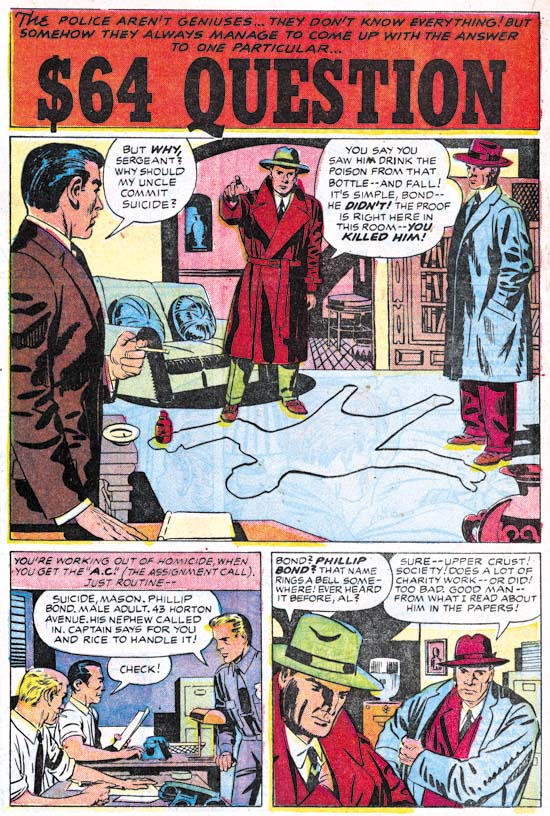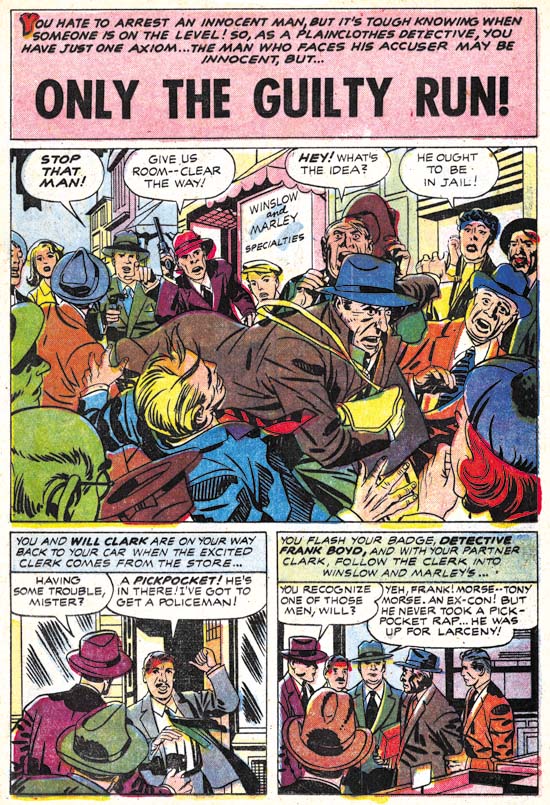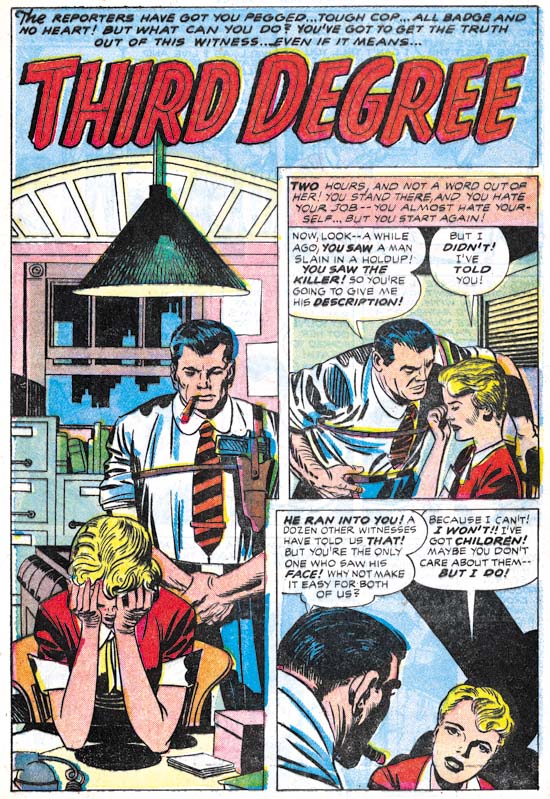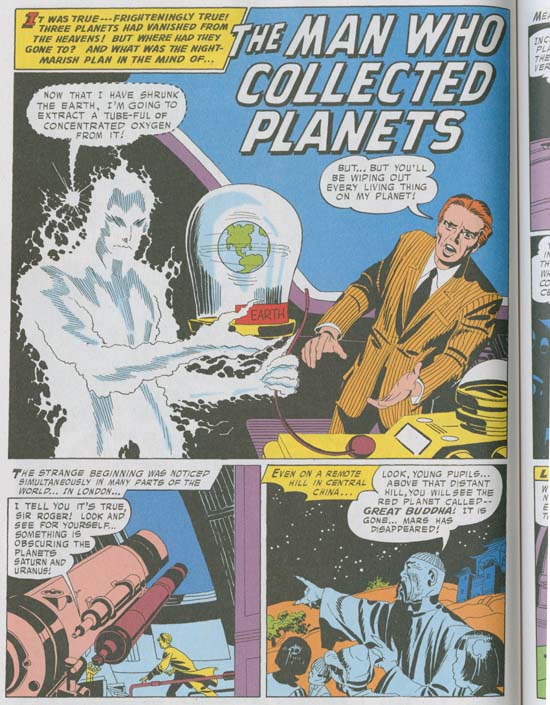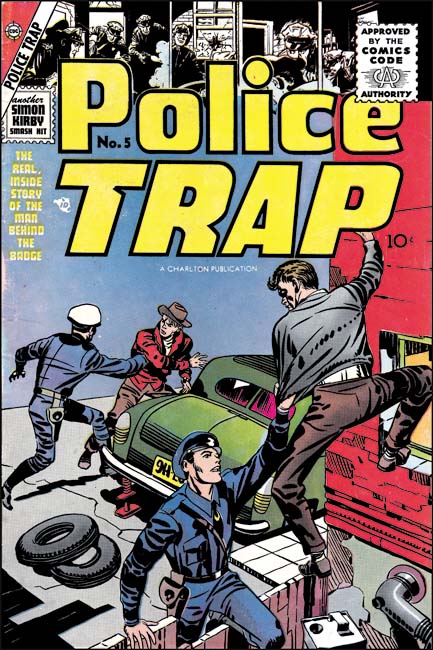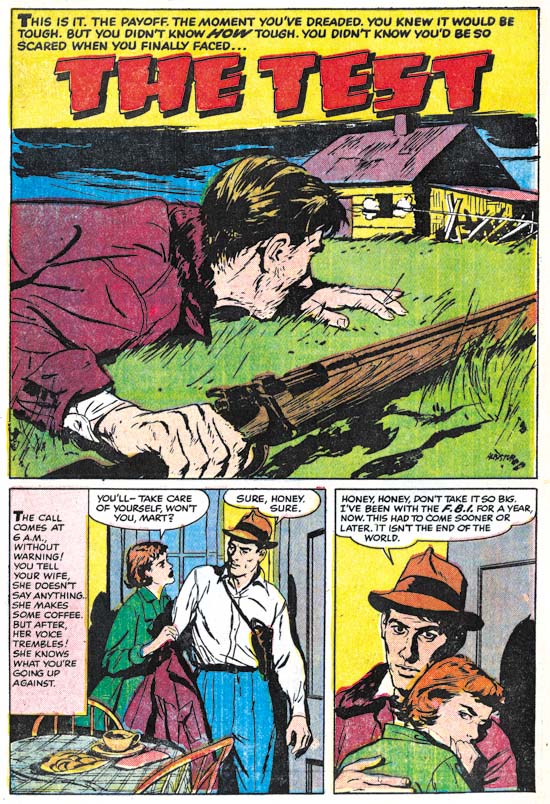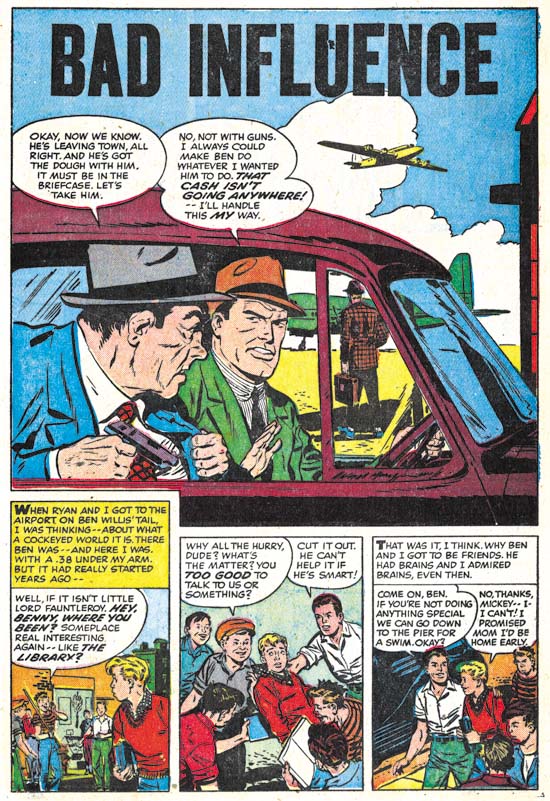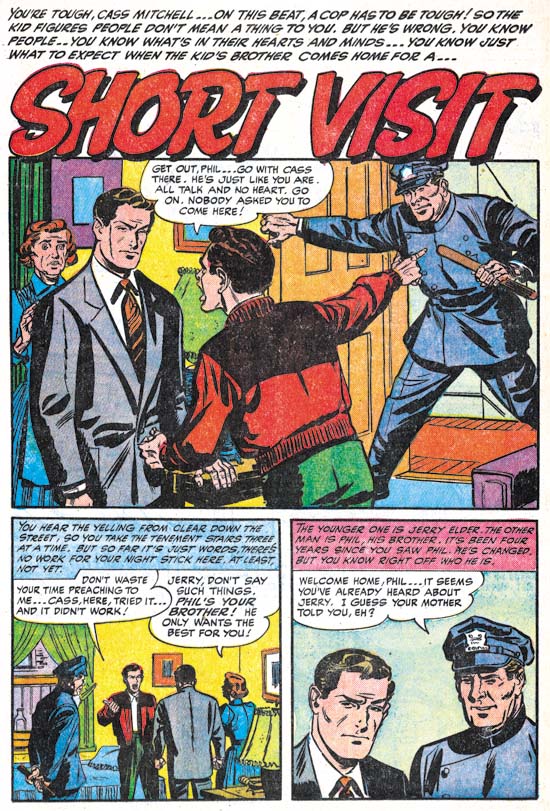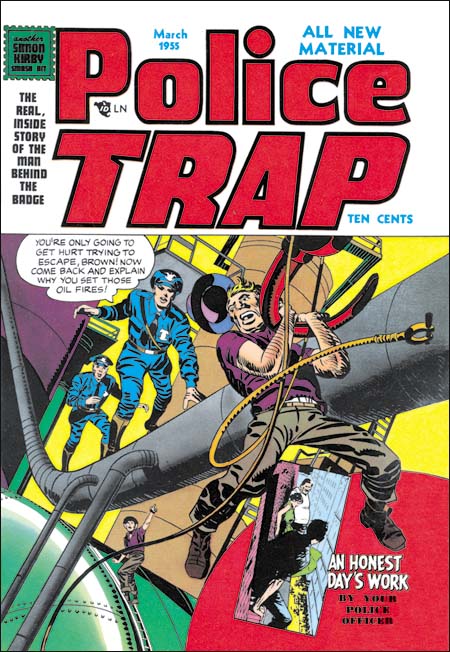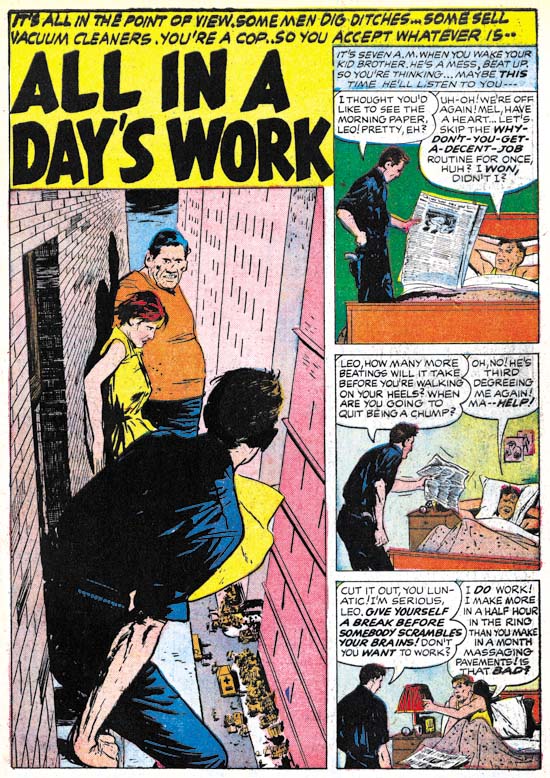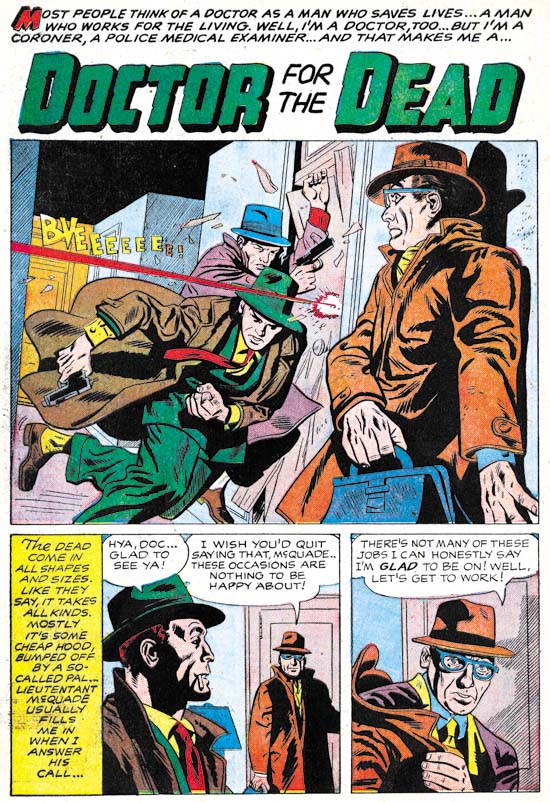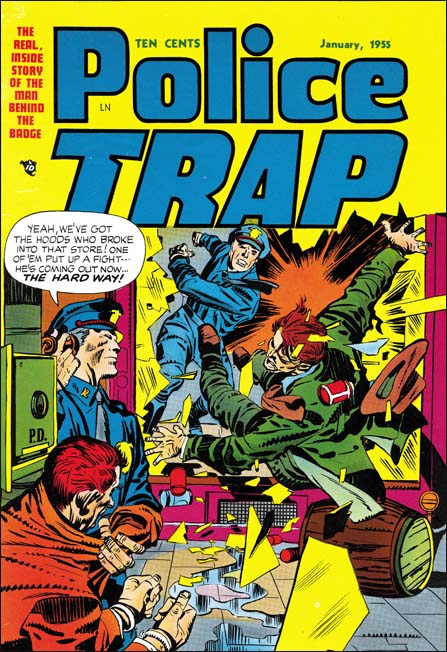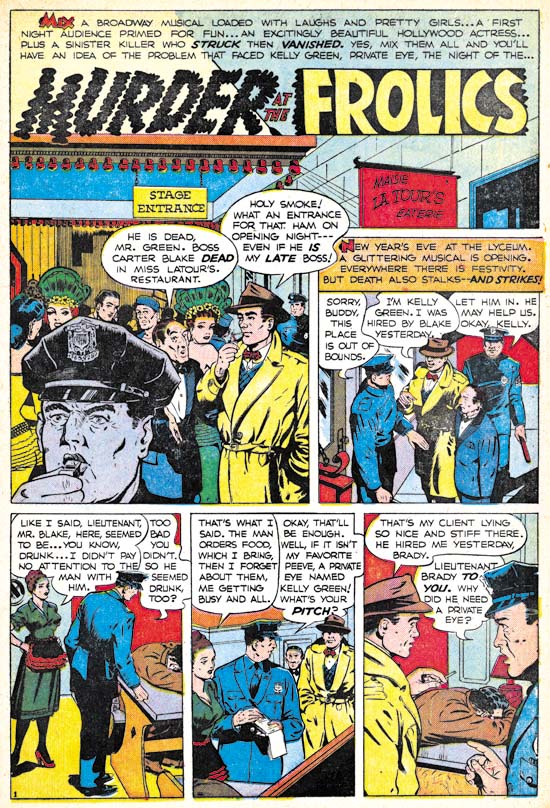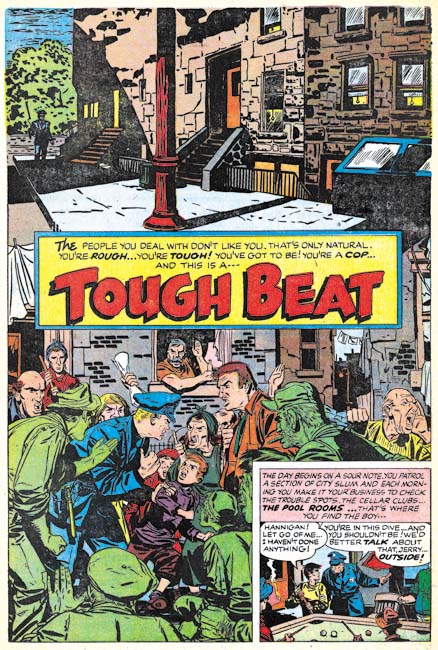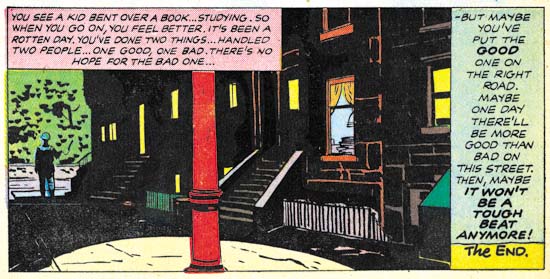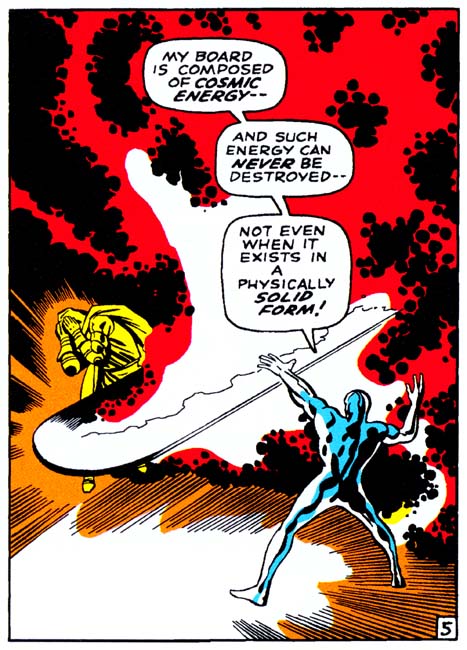
Fantastic Four #57 (December 1966) “Enter, Dr. Doom” page 5 panel 4, pencils by Jack Kirby, inks by Joe Sinnott (from the Marvel Omnibus)
In the 60’s Jack Kirby began to draw clusters of round black dots to depict enormous but not necessarily directed energy, often of a cosmic nature. This simple graphic technique was so effective that it has been picked up by other comic book artists and can still be found in comics of today. The device has been given the name Kirby Krackle. It is an annoying cute* name but one that has become so entrenched that I feel that it must be accepted.
But what are the origins of Kirby Krackle? Some comic book scholars have pointed to a panel from Fantastic Four #46 (January 1966) where the Inhuman Triton is depicted in water surrounded by bubbles and black shapes that look surprisingly like Kirby Krackle. Nothing to suggest energy or anything cosmic but visually similar enough that perhaps it formed the basis for an imaginative leap by Kirby. Old grainy photographs of Quasars (astronomical objects discovered in 1963) have also been suggested to be the inspiration for Kirby Krackle. Because at the time inkers were encourage to embellish the pencils some have even suggested that it was the inker Joe Sinnott that actually created Kirby Krackle!
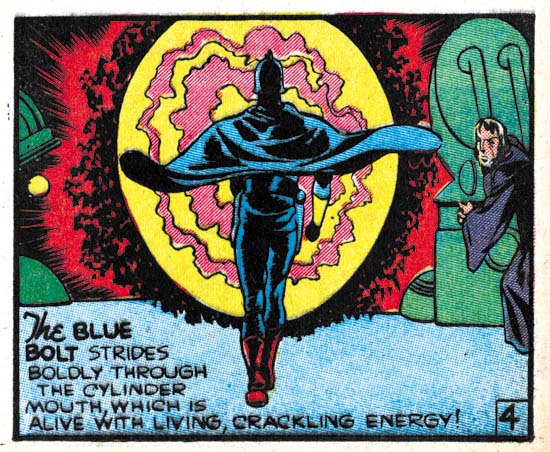
Blue Bolt #5 (October 1940) last panel of page 4, pencils by Jack Kirby, inks by Joe Simon
Such explanations for the origin of Kirby Krackle were all reasonable but those who presented them overlooked Jack Kirby’s long career. Jack had a long memory and old ideas would reappear many years later. There is no better example than Kirby Krackle. The first appearance of Kirby Krackle appears to be found in Blue Bolt #5 (October 1940)**. This really is likely to be the earliest example of Kirby Krackle. Kirby did some previous science fiction stories on his own but nothing resembling Kirby Krackle appears in them. Nor did it appear in Simon’s earlier science fiction nor in the previous issues of Blue Bolt. It is unclear who to credit with this device as Kirby did the pencils and Simon the inking. Unfinished art from later in the Simon and Kirby collaboration shows that while Kirby’s pencils were pretty tight they were line art only with all spotting left to the discretion of the inker. However this example of Kirby Krackle is from early in the Simon and Kirby partnership (which started with Blue Bolt #2, July 1940). This is so early in their collaboration that is would seem reckless to make any assumptions on what were their working methods at that time.
In some respects this is a perfectly acceptable example of Kirby Krackle. But it is not yet the perfected form. While the massing of particles is very much like typical Kirby Krackle the particles are not round but irregular, often angular, in shape. However it is clear that this early example shares the same intent as the caption describes it as having “crackling energy”.
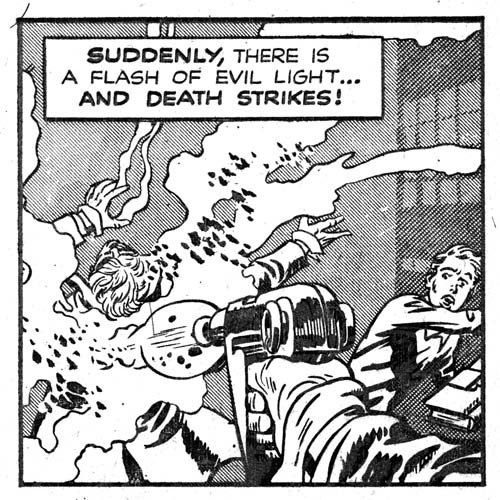
Captain 3-D #1 (December 1953) “The Man from the World of D”, page 2 panel 6, pencils by Jack Kirby, inks by Joe Simon
Simon and Kirby did not do much science fiction and it would be years before something very much like Kirby Krackle made its appearance once again. In 1953 Simon and Kirby put together Captain 3-D for Harvey Comics. It was a rush job to try to take advantage of the 3D craze. All the pencils were by Jack Kirby but the inking was done by an assortment of artists which besides Jack and Joe included Mort Meskin and Steve Ditko (for a more complete examination of the inking see Captain 3D). In the origin story, “The Man from the World of D”, a villains uses a special weapon which releases energy outside the actual firing path. The weapon from the Captain 3D story has a cosmic connection as it is described as a gamma ray gun. In some ways this is not as close an example to Kirby Krackle as that found in Blue Bolt perhaps because of the difference between a dimensional doorway and a weapon. The particles are not clumped together as well as in the Blue Bolt example but have become less irregular in shape. While some have become more rounded other particles still are rather angular.
There is good evidence from unfinished art that by this period Kirby’s pencils provided outlines only with only simple lines to indicate things like the folds in the clothing. How the spotting was to be done was left to the inker. Most of this page was inked by Steve Ditko but Joe Simon applied a lot of retouching. While it is difficult to say with any certainty who to should be credited with the inking of the Kirby Krackle the similarity with the next example suggests it was likely Simon who applied the it.

Captain 3-D #1 (December 1953) “The Man from the World of D”, page 3 panel 6, pencils by Jack Kirby, inks by Joe Simon
The futuristic gun appears once again in the next page from “The Man from the World of D”. The arrangement of the particles is very much the same as the previous example but the particles themselves have lost any angularity and become more rounded. They would not however be described as truly circular in shape. This page was inked by just Joe Simon and so he was likely the one to supply the Krackle.
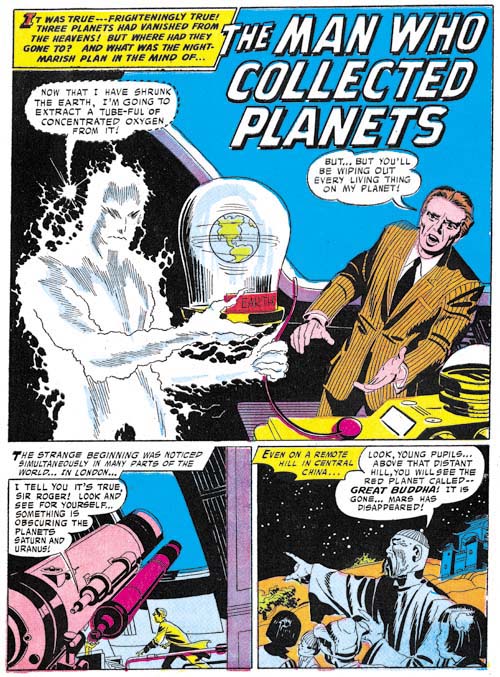
Tales of the Unexpected #18 (October 1957) “The Man Who Collected Planets”, pencils and inks by Jack Kirby
Once again the use of anything akin to Kirby Krackle does not appear for some time largely because there were few if any stories where it might be appropriate. After the Simon and Kirby partnership ended Jack began to do freelance work mostly for DC. Something akin to Kirby Krackle appears in the depiction of the alien in a story called “The Man Who Collected Planets”***. While the alien is surrounded by something not dissimilar to Kirby Krackle it covers an uncharacteristically narrow area and the primary purpose appears to be more of a means of providing him with a fiery aura than of suggesting a form of energy.
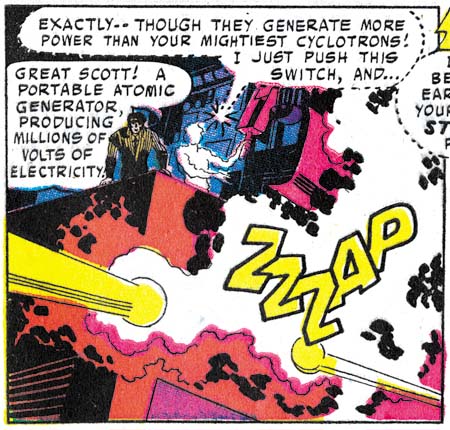
Tales of the Unexpected #18 (October 1957) “The Man Who Collected Planets” page 3 panel 5, pencils and inks by Jack Kirby
However “The Man Who Collected Planets” contains panels that show something very much closer to true Kirby Krackle than that used in drawing of the alien. Here it truly is energy that is being depicted. The particles have become more varied in size a more clumped together. However unlike typical Kirby Krackle the particles are still not very rounded in shape.

Tales of the Unexpected #18 (October 1957) “The Man Who Collected Planets” page 5 panel 5, pencils and inks by Jack Kirby
This was no accident as the same Kirby Krackle precursor appears elsewhere in the story. Kirby did his own inking for most of the horror or science fiction stories that he did for DC. “The Man Who Collected Planets” is a great example of Kirby inking Kirby. So in this case we can safely give Kirby the credit for this Kirby Krackle prototype.

House of Mystery #84 (March 1959) “The Negative Man”, panel from page 3, pencils by Jack Kirby, inks by Marvin Stein?
Further examples of a Kirby Krackle prototype appear in another story that Kirby drew for DC, “The Negative Man”. This story is again about an unearthly being and something similar to Kirby Krackle is used to provide the being with a fiery aura. But once again it is elsewhere where even better examples of Kirby Krackle can be found such as the energy wake left behind the negative man of one panel from the third page.

House of Mystery #84 (March 1959) “The Negative Man”, panel from page 5, pencils by Jack Kirby, inks by Marvin Stein?
An even better example of Kirby Krackle prototype is found in small panel from page 5 where the negative man unleashes his power. The particles are relatively large and not at all circular but the clumping is very much like typical Krackle.
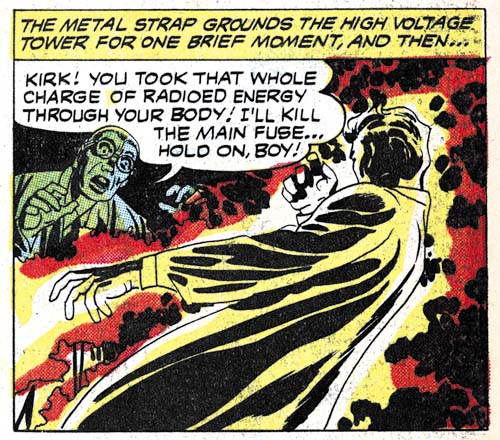
House of Mystery #84 (March 1959) “The Negative Man”, panel from page 2, pencils by Jack Kirby, inks by Marvin Stein?
The Kirby Krackle prototype from “The Negative Man” is very similar to that found previously in “The Man Who Collected Planets”. However while Kirby inked his own pencils in the earlier story some other artist inked “The Negative Man”. I am not positive as to who that inker was but the blunt but fluid brushwork looks very much like the work of Marvin Stein so I questionably attribute it to him. The two stories are similar enough that perhaps Stein used the earlier Kirby inked story as a reference when inking this one. Or perhaps Kirby had already begun to include how a story should be spotted in his pencils. In either case the use of the Kirby Krackle in this story should be credited to Jack Kirby.
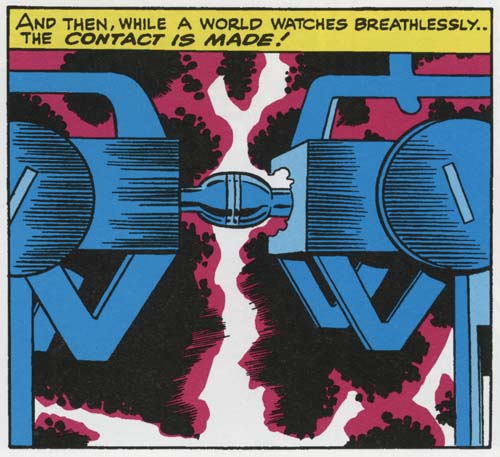
Fantastic Four #49 (April 1966) “If This Be Doomsday” page 12, pencils by Jack Kirby, inks by Joe Sinnott (from the Marvel Omnibus)
While the infrequent use of Kirby Krackle in the earlier publications can be explained by the lack of appropriate stories, its absence from Kirby’s earlier silver age work for Marvel is more difficult to understand. There certainly were a number of stories with subjects seemingly well suited for Kirby Krackle. It would seem that Jack had just forgotten about it. Perhaps there is some truth in the explanations previously used to explain the emergence of Kirby Krackle but not as inspiration for its creation but rather as a reminder to the artist of an almost forgotten technique. Once true Kirby Krackle appeared it was already exhibited the classic clumping of round particles and in this respect it differs from the earlier prototypic versions. Not perfect circles but not the more extended shape of the prototypes.

Fantastic Four #48 (March 1966) “The Coming of Galactus” page 12, pencils by Jack Kirby, inks by Joe Sinnott (from the Marvel Omnibus)
While classic Kirby Krackle was used to portray a simmering energy, the same purpose the prototypic form had been put to, Jack also used it when depicting the cosmos. Kirby Krackle always seem to have a cosmic connection but had not previously been used when drawing outer space. I suspect Kirby was using this device to suggest that space was more than vast distances of vacuum but a place filled with potent energy. Certainly with the help of Kirby Krackle, Jack’s astronomical visas became more exciting than any other comic book artists had ever achieved.
P.S.
I have previously written about Kirby Krackle but I have decided to gather it all together with some new information. I will provide links to my previous posts but the reader will find little more than what is covered here (Kirby Krackle, More Kirby Krackle). Shane Foley has written an excellent article available online exploring the appearance of Kirby Krackle in the Marvel comics (Kracklin’ Kirby, Jack Kirby Collector #33). While he understandably failed to make the connection with previous examples of Kirby Krackle, his article does a marvelous job of tracing its use in silver age comics.
Footnotes:
* The overuse of Kirby K… is so extensive that my reaction is to wonder whether the originators of these terms were more interesting in getting credit for coining a cute name than in any serious investigation into Jack Kirby’s artistry.
** I do not know who to credit for first trying to draw attention to this early example of Kirby Krackle. It was brought up on the now defunct Kirby List where the poster provided a page number based on the Verotik Blue Bolt book. Unfortunately that volume lacks paging and the image that at the time I thought was being referenced was not an example of Kirby Krackle. I came across the panel from Blue Bolt #5 during a recent review in preparation for a serial post I hope to do on Blue Bolt. I am sure it is that panel that the Kirby list poster was trying to refer to.
*** The use of Kirby Krackle in “The Man Who Collected Planets” was originally pointed out to me by Ger Apeldoorn in the comments to one of my early posts on Kirby Krackle.
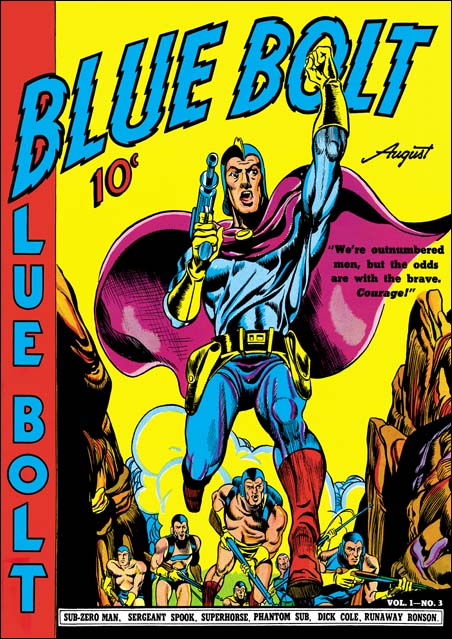
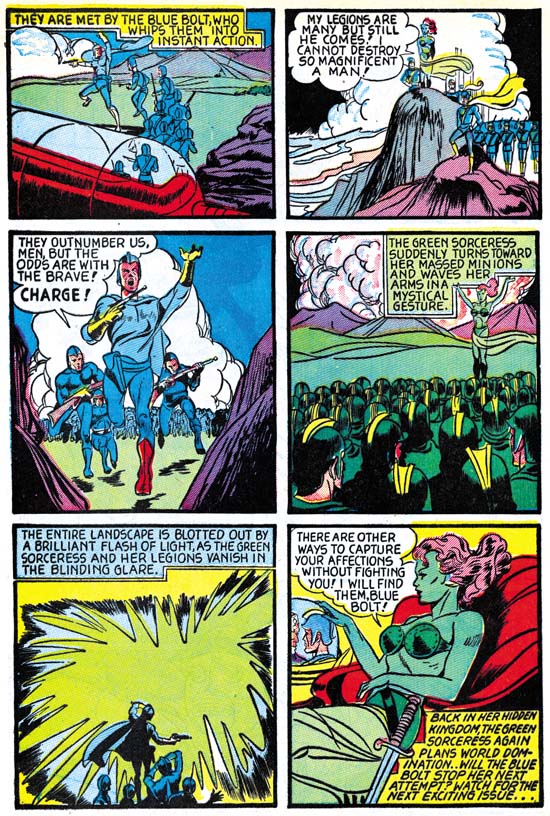
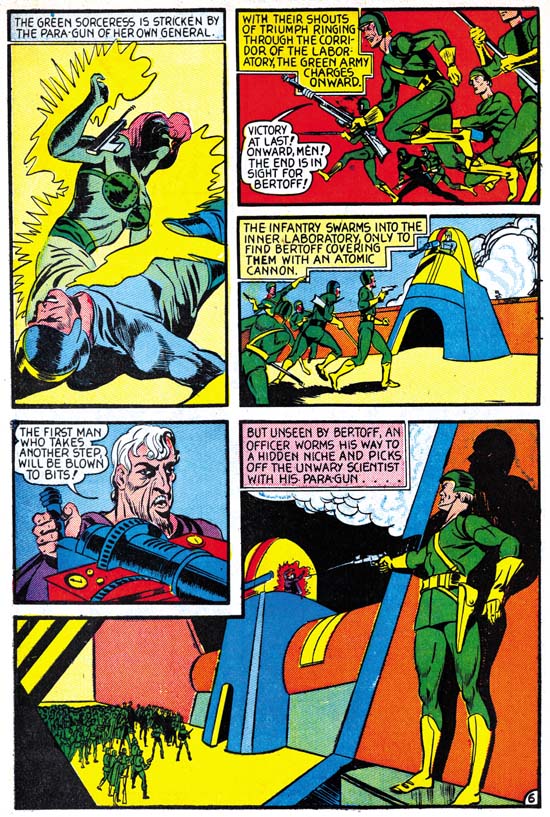
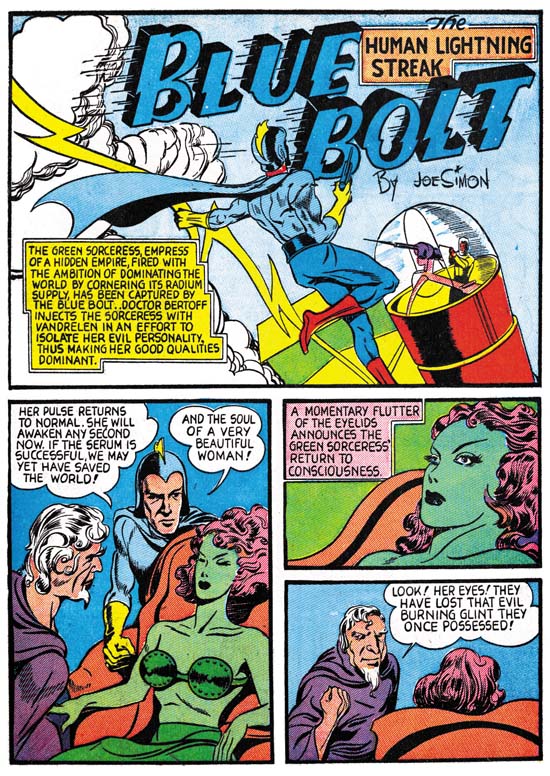



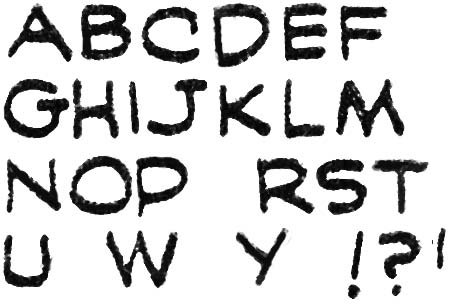


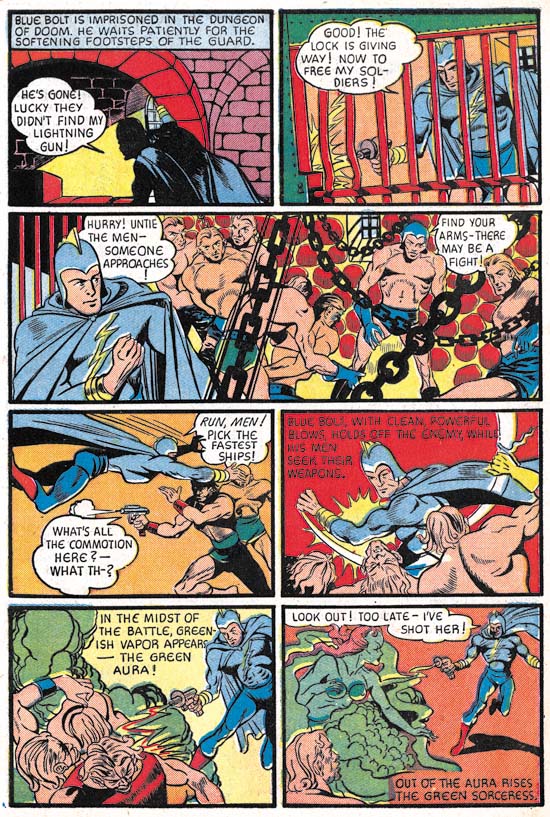
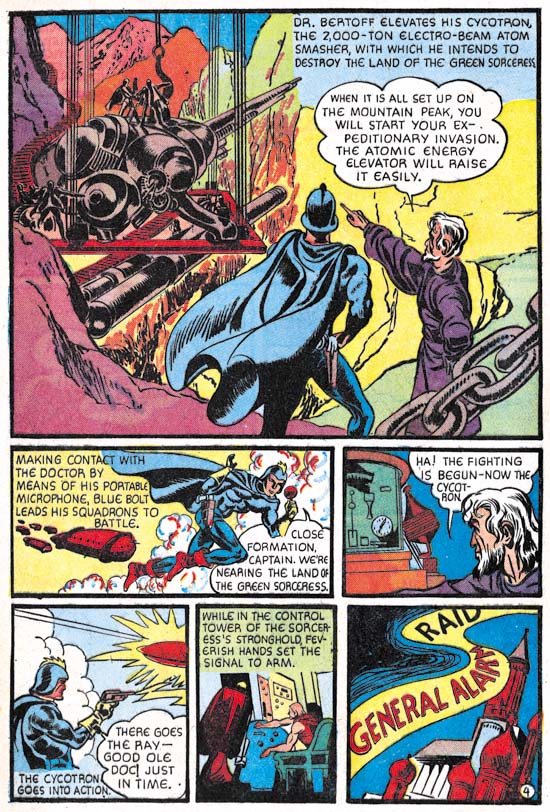
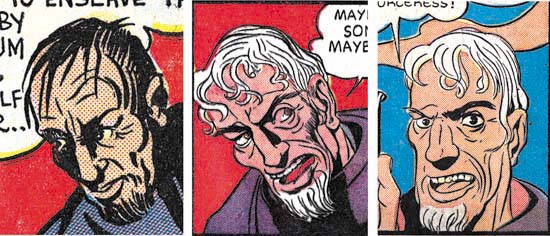
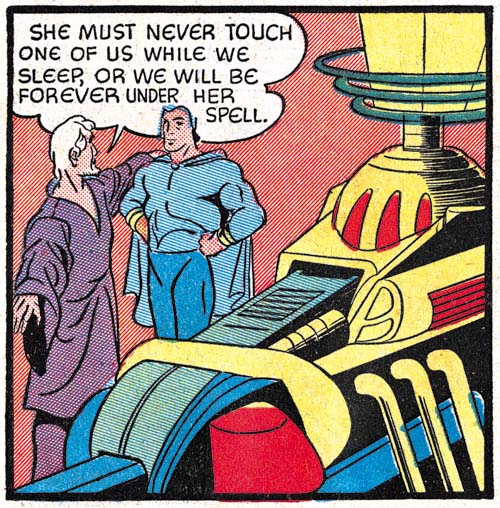
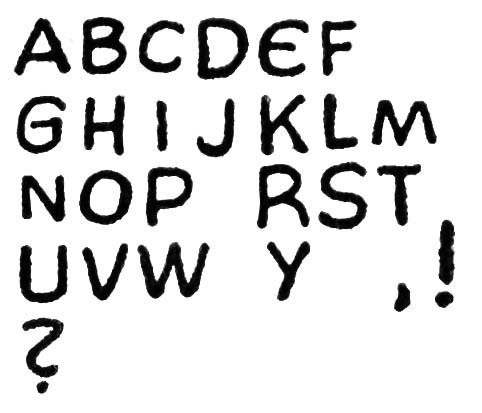
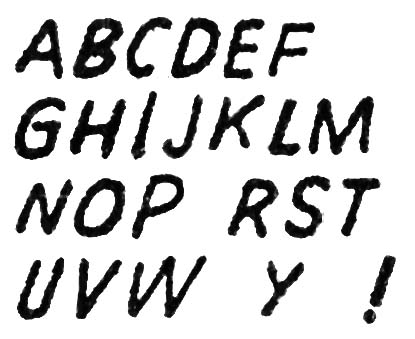
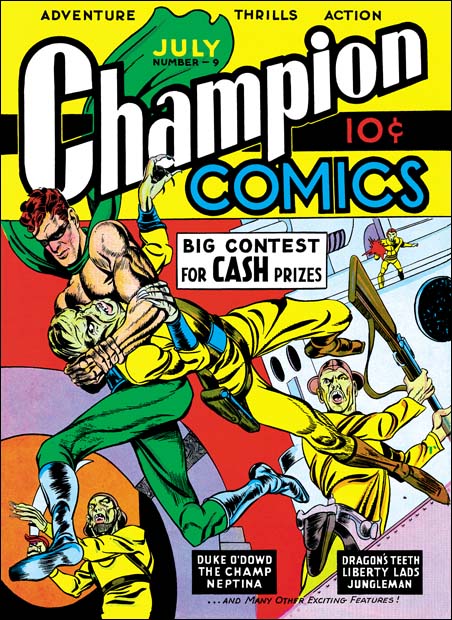
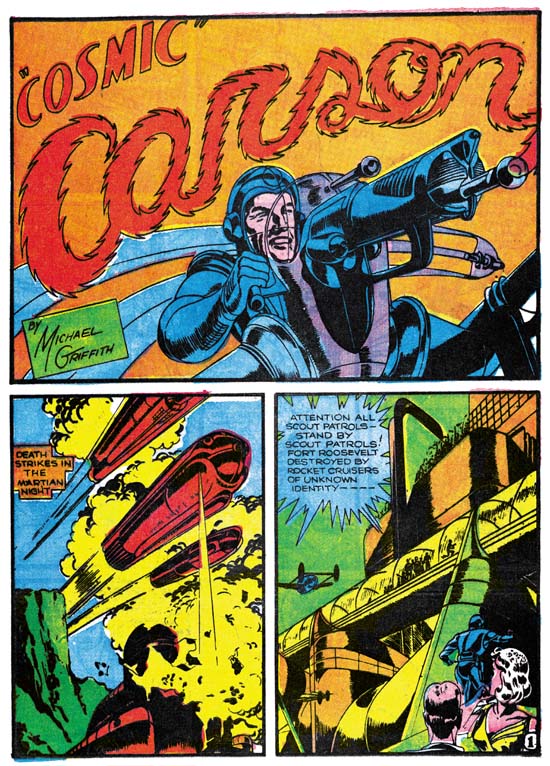
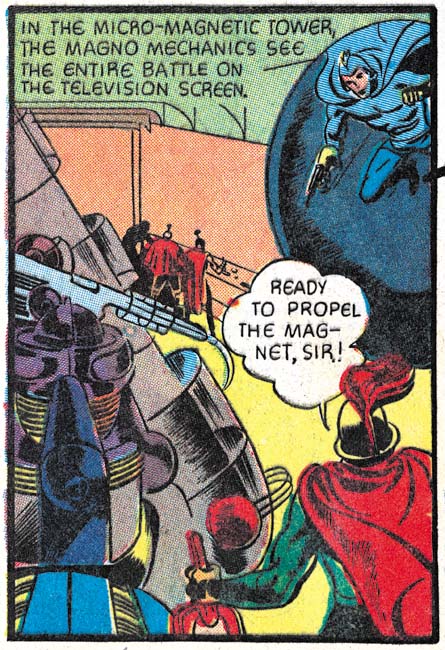
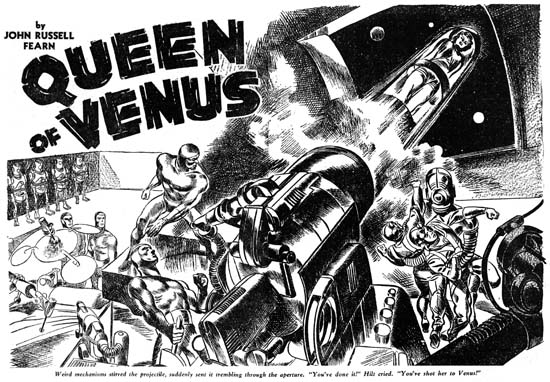
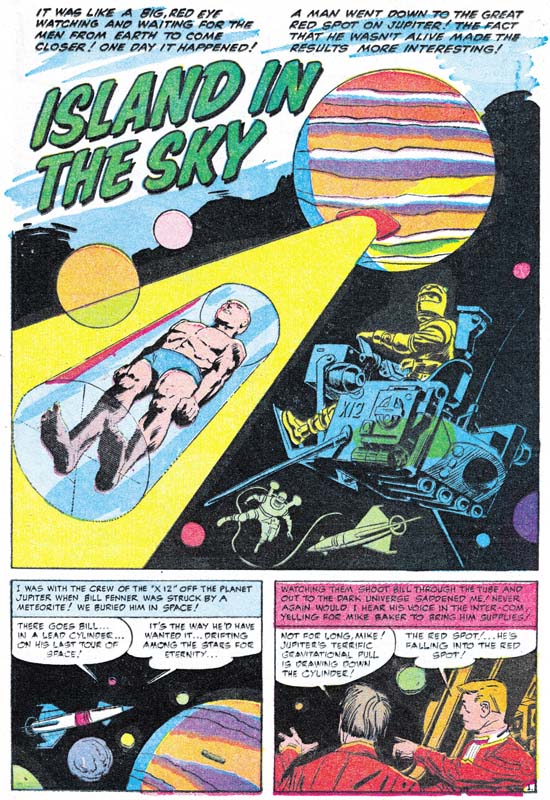

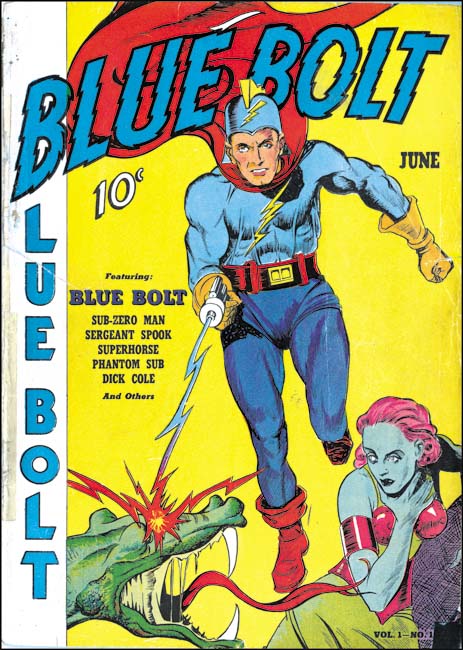
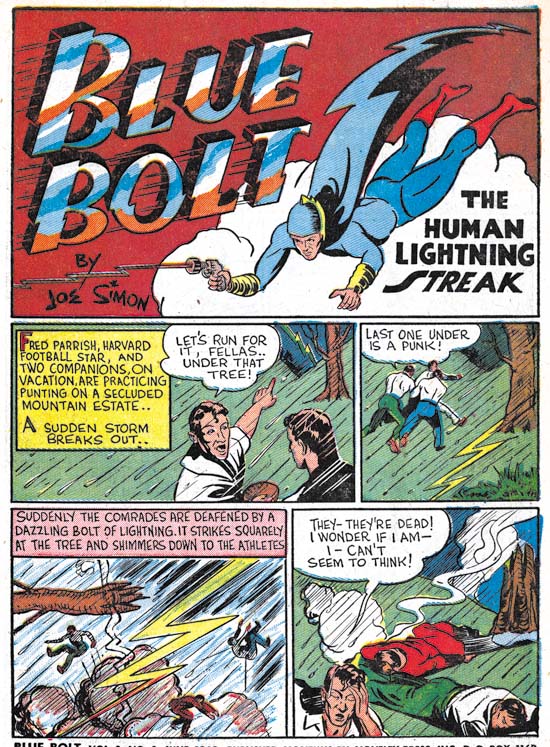
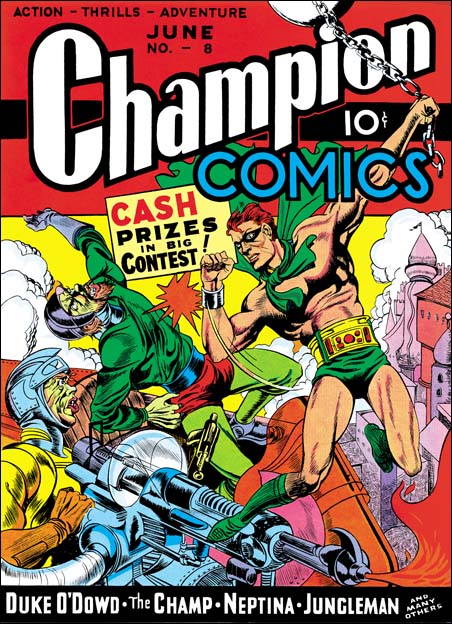 Champion Comics #8 (June 1940) art by Joe Simon and Jack Kirby?
Champion Comics #8 (June 1940) art by Joe Simon and Jack Kirby?











